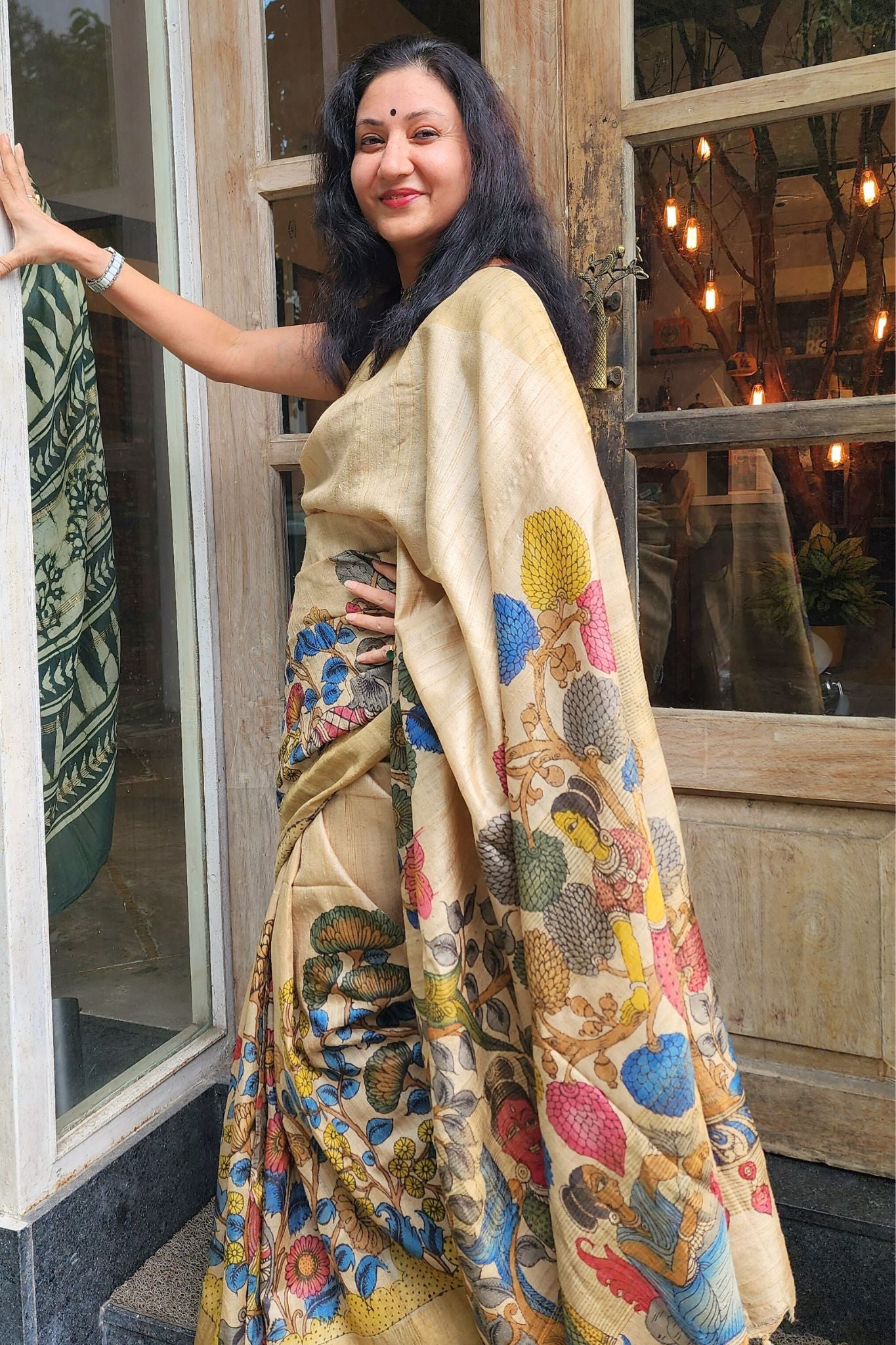Is Kalamkari Print Coming Back In Vogue?
by Nameg Store Explore Exclusive Handloom SareesKalamkari print is arguably one of the most intricate forms of hand block printing technique there is. It is popular because of the varied reasons stated here.
Kalamkari print is more than just print on fabric. It is an art form that has transpired the passage of time and has lived through. This hand-block print technique dates back to 3000 years ago and it has survived and is still practised in the state of Telangana and Andhra Pradesh. The Kalamkari artisans use a tamarind pen and natural dyes to bring these vibrant and colourful designs to life. While this print is again witnessing a new rise in popularity, it was most popular in the Mughal period. The artisans use varied motifs designs from birds, flowers, and plants to mythical creatures to narrate a tale. Thus, this is not just a mere hand-block painting technique but rather an art form that uses motifs prints on textiles to narrate a tale.

These days, Kalamkari print has seen its re-birth, as it is now again coming back into vogue. You can commonly see these vivid Kalamkari motif prints on dupattas and sarees. In Kolkata itself, women have lovingly embraced this ancient art form decked in sarees and dupattas. But what’s the allure behind Kalamkari print that’s been the force behind the re-genesis of hand block motif print on fabrics:
1. Colourful Prints:
One of the biggest reasons behind the popularity of the Kalamkari print is none other than the vibrant and colourful prints. The colourful motif on a linen or cotton fabric has become popular yet again. Originally the Kalamkari printed sarees and dupatta were made with natural dyes obtained from varied natural sources such as indigo, madder root, beat root, turmeric and more. While the commercially produced Kalamkari sarees and dupatta may mimic the motif but are not made with natural dye. However, you can still find high-quality natural dye-painted authentic Kalamkari dupatta and sarees in Kolkata if you are ready to pay for the authentic product.
2. Earthy Design:
Unlike the geometric designs that you popularly see on clothes, this Kalamkari print takes a lee-way from it. Instead, it delves into more freestyle handblock techniques to create a more earthy design. It offers a great diversion from the typical prints that one can commonly see. This intricate and elaborative design has more to offer in terms of artistic expression than the common prints widely available.
3. Preserving Rich Cultural Heritage:
Kalamkari prints are part of the rich textile culture. The practice of creating this hand-block motif has been passed down to generations by artisans in their families. The culture of creating Kalamkari art pieces dates back to 3000 years ago. Thus, getting the Kalamkari printing style back in vogue is also a way to preserve our rich textile history. You can help preserve this art form by purchasing the Kalamkari print dupatta and sarees from authentic Kalamkari saree stores in Kolkata.
4. GI Tag:
Kalamkari prints are classified into numerous types. Two popular styles of Kalamkari prints may be traced back to Andhra Pradesh. Machilipatnam is one, while Srikalahasti is another. Both of these varieties of Kalamkari prints have GI tags. This has also contributed to the rise of printing styles.
Apart from the usual rhetoric, these are some of the reasons why Kalamkari print is again back in fashion. Kalamkari print is an art form that has been in our culture for many years and is expected to make a resurgence over time. This is why you may find individuals wearing vivid Kalamkari patterned dupattas and sarees all across the country. So, to cut a long story short, yes, Kalamkari print is back!
Sponsor Ads
Created on Oct 31st 2023 23:43. Viewed 87 times.
Comments
No comment, be the first to comment.



